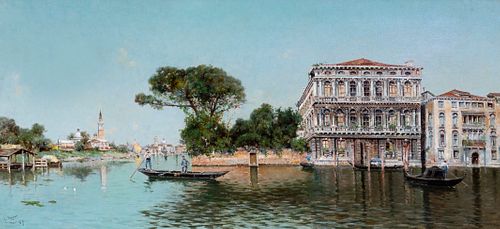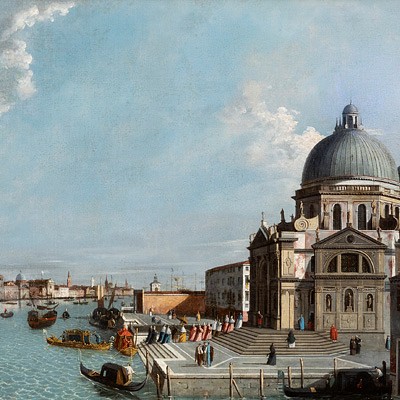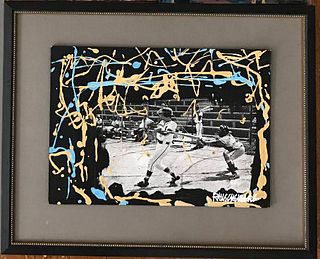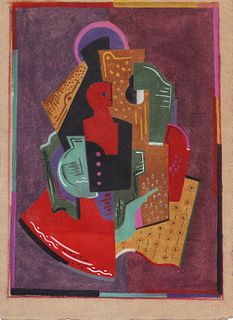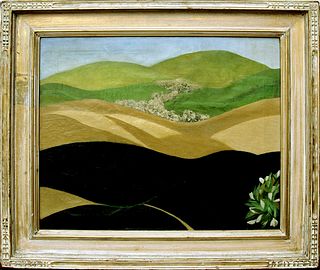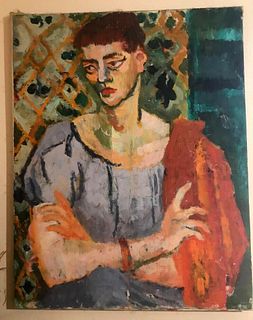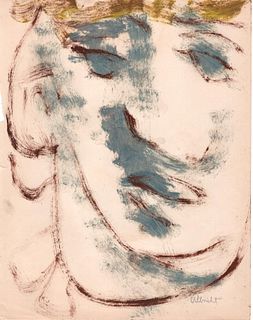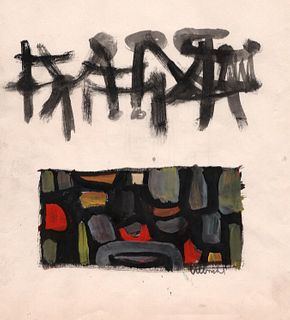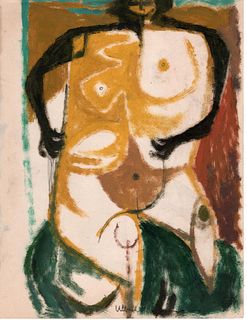ANTONIO REYNA MANESCAU (Coín, Málaga, 1859 - Rome, 1937). "Venetian view with the Ca'Rezzonico palace". Oil on canvas. Signed in the lower left cor
Lot 45
About Seller
Setdart Auction House
Carrer Aragó 346
Barcelona
Spain
Setdart Subastas was born in 2004 and is currently the first online art auction in Spain with solidity, prestige and reliability guaranteed by our more than 60,000 users. Setdart has a young, dynamic and enterprising team ready to successfully manage the purchase and sale of art works through custom...Read more
Estimate:
EUR€25,000 - EUR€30,000
$26,881.72 - $32,258.06
Absentee vs Live bid
Two ways to bid:
- Leave a max absentee bid and the platform will bid on your behalf up to your maximum bid during the live auction.
- Bid live during the auction and your bids will be submitted real-time to the auctioneer.
Bid Increments
| Price | Bid Increment |
|---|---|
| EUR€0 | EUR€10 |
| EUR€200 | EUR€25 |
| EUR€500 | EUR€50 |
| EUR€1,000 | EUR€100 |
| EUR€3,000 | EUR€200 |
| EUR€5,000 | EUR€500 |
| EUR€10,000 | EUR€1,000 |
| EUR€20,000 | EUR€2,000 |
| EUR€50,000 | EUR€5,000 |
About Auction
By Setdart Auction House
May 18, 2021
Set Reminder
2021-05-18 09:30:00
2021-05-18 09:30:00
America/New_York
Bidsquare
Bidsquare : Classics XIX and XX
https://www.bidsquare.com/auctions/setdart-auction-house/classics-xix-and-xx-6961
The next 18th May there will be a 19th and 20th Century Classics Auction at Setdart.com There will be a select repertoire of important artists such as Carlos Cruz Diez, Luis Feito, Joan Miró, Fernando Botero, Josep Llimona, Salvador Dalí among others. Setdart Auction House sofia@setdart.com
The next 18th May there will be a 19th and 20th Century Classics Auction at Setdart.com There will be a select repertoire of important artists such as Carlos Cruz Diez, Luis Feito, Joan Miró, Fernando Botero, Josep Llimona, Salvador Dalí among others. Setdart Auction House sofia@setdart.com
- Lot Description
ANTONIO REYNA MANESCAU (Coín, Málaga, 1859 - Rome, 1937). "Venetian view with the Ca'Rezzonico palace". Oil on canvas. Signed in the lower left corner. Measurements: 34 x 74 cm; 45 x 85 cm (frame). While living in Rome, where he worked with great success on casacón themes, Antonio Reyna often traveled to Venice to produce exquisitely crafted veduti such as the one we are dealing with here. Venice was at that time a pole of attraction for Spaniards thanks to Fortuny's widow and the weight of Villegas's Venetian production, as well as the effect of the summer stays (with later continued residence) of Martín Rico, whose precious landscapes influenced Reyna. Immersed in this environment, Reyna indulged in vedutism with views such as this one in which the baroque palace Ca'Rezzonico stands in the middle of the canal, crossed by several gondoliers. To the left, our view reaches different levels of depth, and palaces and churches line up in the distance. Lush vegetation alternates with the architecture lining the canal and its reflections glitter on the calm waters. Reyna shows a special refinement in light capture in the impressionist tradition. Nowadays considered one of the most important Andalusian landscape painters of the 19th century, Antonio Reyna soon discovered his vocation for painting, as well as his innate talent for drawing and his special aptitudes, which led his parents to enroll him in the School of Fine Arts in Malaga. There he was taught, first by Joaquín Martínez de la Vega and later by Bernardo Ferrándiz. From a very young age he exhibited his works regularly, standing out in the local artistic environment for his colorful, attractive compositions and the ease of his brushstroke. His progress would be spectacular, and in 1882 he obtained a pension from the Diputación de Málaga to further his studies in Italy. Reyna had fallen in love with Rome, and in that city he would live forever. In 1885 he traveled to Venice, and from then on he would dedicate most of his production to reproducing Venetian corners, captured with a precious and narrative technique. In fact, he became known as "the painter of Venice". In 1910, on the occasion of his mother's death, Reyna spent some time in his native city. There he was inspired to create another of his most celebrated successes, the canvas "Rancho Andaluz", which he showed at the International Exhibition of Fine Arts in Rome the following year. In his painting, certainly novel for the time, the painter shows at all times his skill for drawing, as well as an innate ability for composition, marked by the boldness of his brushstroke and a great chromatic richness. On December 5, 2009, on the occasion of the 150th anniversary of Antonio Reyna's birth, a large anthological exhibition of his work was inaugurated at the García Agüera Foundation in Malaga. Currently, Antonio Reyna has a museum with his name in Coin, and is also represented in the Fine Arts Museums of Malaga and Boston, the Carmen Thyssen in Malaga and in the gallery of the Vatican Museums, although most of his work is in the hands of individuals, having found the presence of his paintings in France, England, Switzerland and Holland.
- Shipping Info
-
In-House Shipping
-
- Buyer's Premium



 EUR
EUR CAD
CAD AUD
AUD GBP
GBP MXN
MXN HKD
HKD CNY
CNY MYR
MYR SEK
SEK SGD
SGD CHF
CHF THB
THB